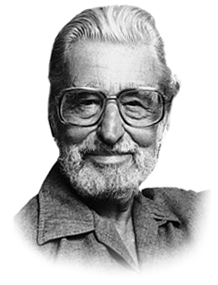
With the release of 'Hooray for Diffendoofer Day!', readers young and old are afforded a dazzling glimpse into the genius of Theodor "Dr. Seuss" Geisel. This book is based on 14 rough drawings and verses Geisel's secretary gave to the author's editor, Janet Schulman, after his death in 1991. In these scribbled sketches and scratched-out lines, we witness the Seussian process in building a story. When brainstorming the name of what resulted in the Diffendoofer School, he jots down several possible names—"William Wilkins Woofer Junior," "Woodrow Watkins Woofer," "Zoofendorf Elementary," "J. Ebeneezer Bomberg Jr."—all of a slightly different cadence and rhythm, which he tests like a composer writing a new concerto. A small collection of Geisel's rough sketches would be plenty to thrill even the Grinchiest of readers, but there's much more to this marvelous book. Renowned children's poet Jack Prelutsky and award-winning illustrator Lane Smith were called to action by Schulman to pull these sketches into a complete story that would make Dr. Seuss fruffulous with glee. Prelutsky's delicious verse is uncannily Seussian, and it is inexplicably sensational when exploring the Diffendoofer School to discover good old Horton, a platter of green eggs and ham, and a few Whos from Who-ville scattered across the surreal and fascinating landscape of Smith's artwork. Lane and Prelutsky have gone above and beyond the call of duty, maintaining the characters and themes Geisel was just beginning to develop, but enhancing them with their own delightful stylistic stamps. Above all, this incredible book is an ode to unorthodox, unusually creative teachers, and the innovative thinking they encourage in young minds. It is a noble theme, and one that Geisel surely had in mind when he concocted these preliminary sketches. Both new Dr. Seuss aficionados and those who remember 'The Cat in the Hat's' 1957 debut will cherish this book for its message, artwork, and poetry, and most of all as a tribute to the man who inspired thousands of readers. Ages: 3 and older
Author

Theodor Seuss Geisel was born 2 March 1904 in Springfield, Massachusetts. He graduated Dartmouth College in 1925, and proceeded on to Oxford University with the intent of acquiring a doctorate in literature. At Oxford he met Helen Palmer, who he wed in 1927. He returned from Europe in 1927, and began working for a magazine called Judge, the leading humor magazine in America at the time, submitting both cartoons and humorous articles for them. Additionally, he was submitting cartoons to Life, Vanity Fair and Liberty. In some of his works, he'd made reference to an insecticide called Flit. These references gained notice, and led to a contract to draw comic ads for Flit. This association lasted 17 years, gained him national exposure, and coined the catchphrase "Quick, Henry, the Flit!" In 1936 on the way to a vacation in Europe, listening to the rhythm of the ship's engines, he came up with And to Think That I Saw It on Mulberry Street, which was then promptly rejected by the first 43 publishers he showed it to. Eventually in 1937 a friend published the book for him, and it went on to at least moderate success. During World War II, Geisel joined the army and was sent to Hollywood. Captain Geisel would write for Frank Capra's Signal Corps Unit (for which he won the Legion of Merit) and do documentaries (he won Oscar's for Hitler Lives and Design for Death). He also created a cartoon called Gerald McBoing-Boing which also won him an Oscar. In May of 1954, Life published a report concerning illiteracy among school children. The report said, among other things, that children were having trouble to read because their books were boring. This inspired Geisel's publisher, and prompted him to send Geisel a list of 400 words he felt were important, asked him to cut the list to 250 words (the publishers idea of how many words at one time a first grader could absorb), and write a book. Nine months later, Geisel, using 220 of the words given to him published The Cat in the Hat , which went on to instant success. In 1960 Bennett Cerf bet Geisel $50 that he couldn't write an entire book using only fifty words. The result was Green Eggs and Ham . Cerf never paid the $50 from the bet. Helen Palmer Geisel died in 1967. Theodor Geisel married Audrey Stone Diamond in 1968. Theodor Seuss Geisel died 24 September 1991. Also worked under the pen name: Theo Le Sieg